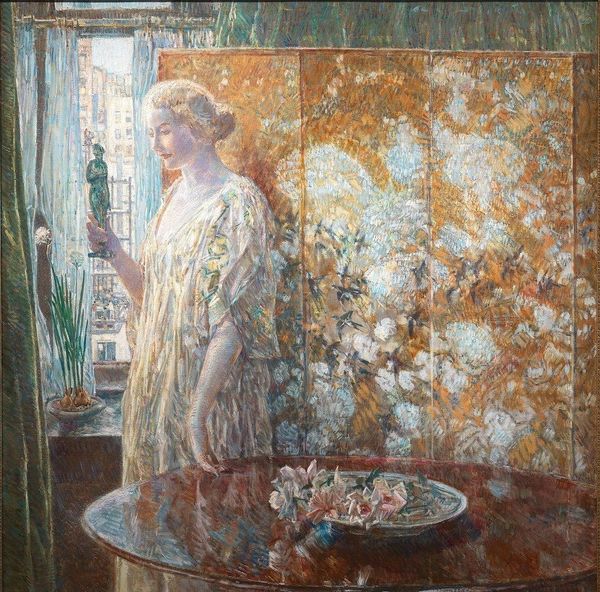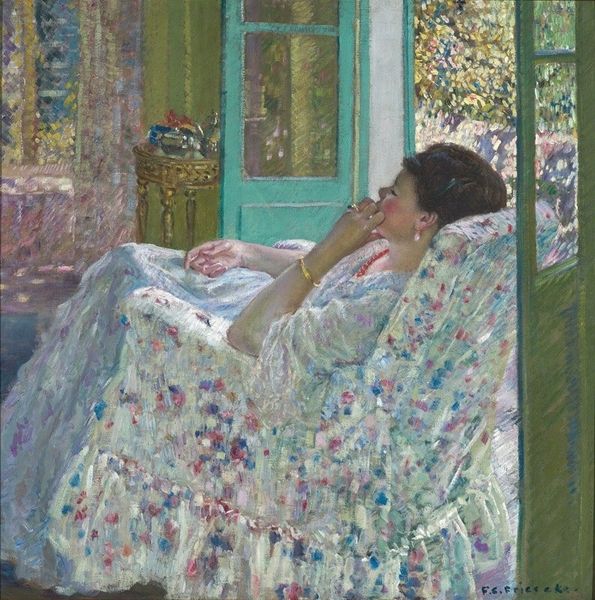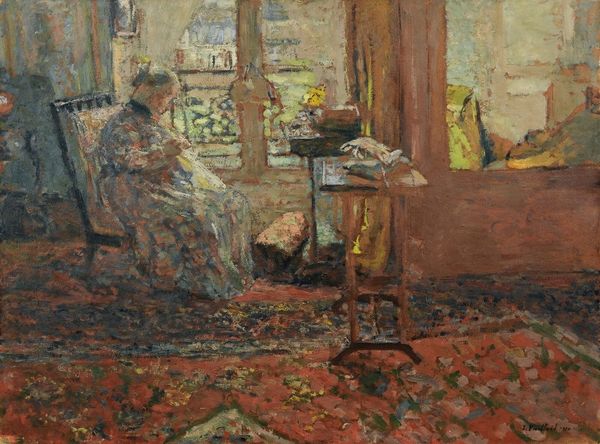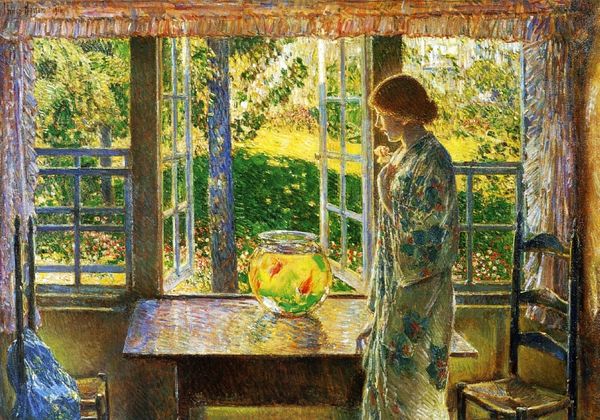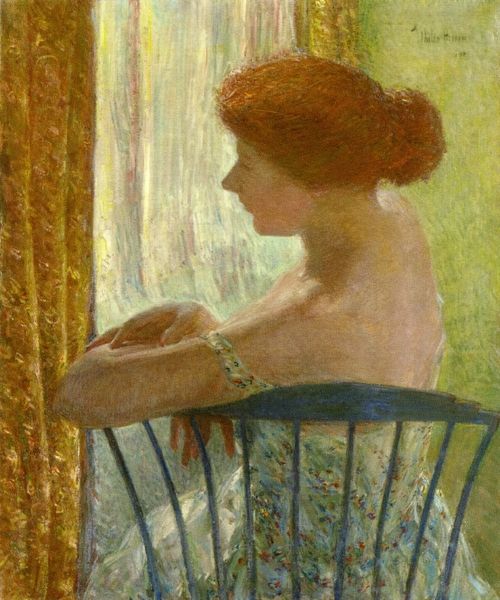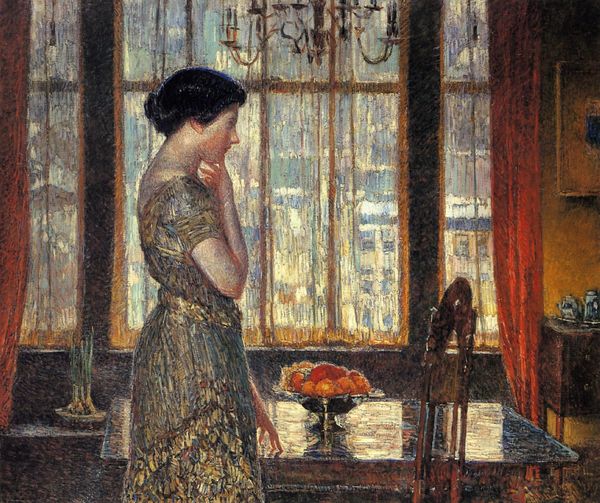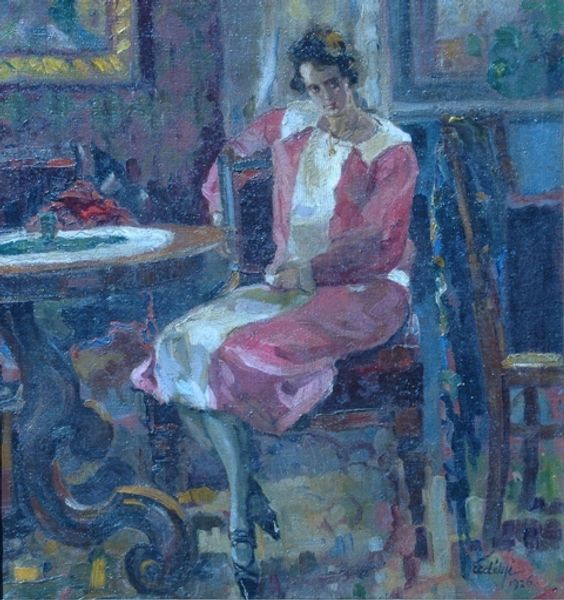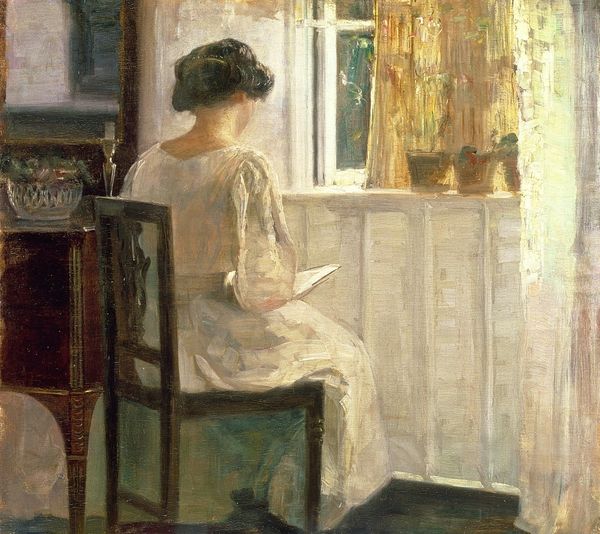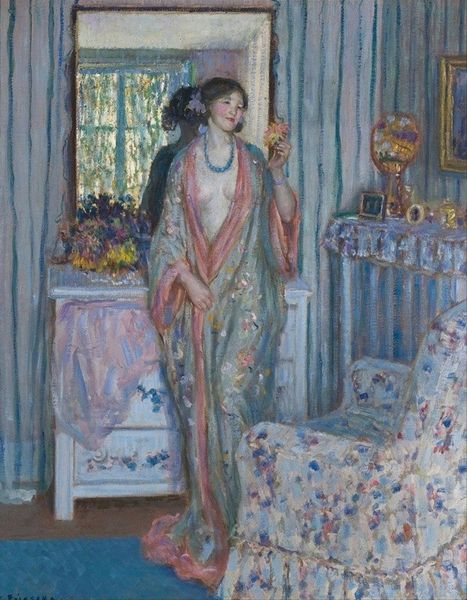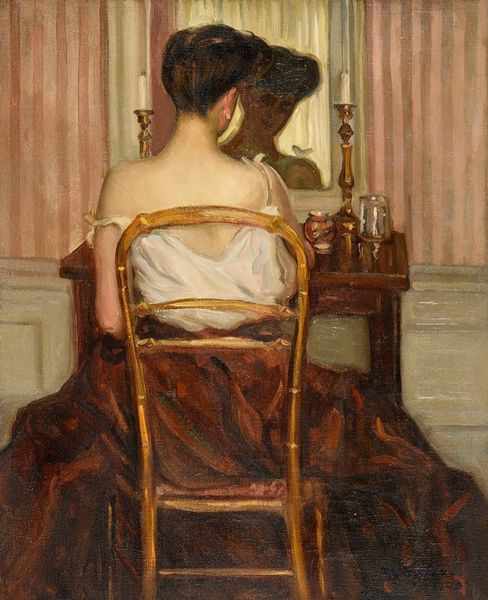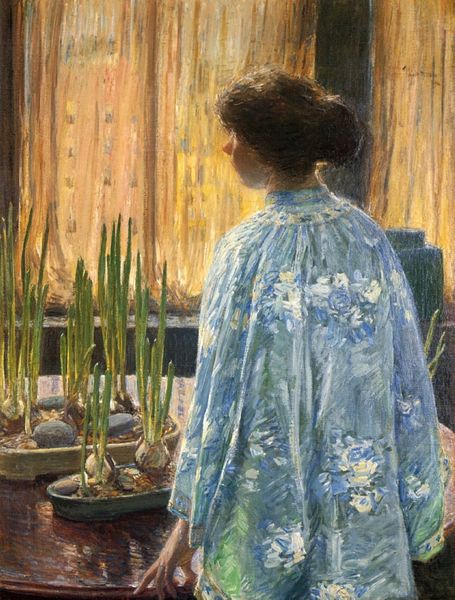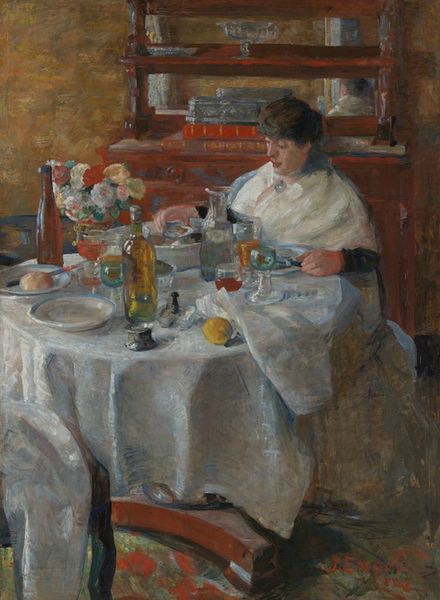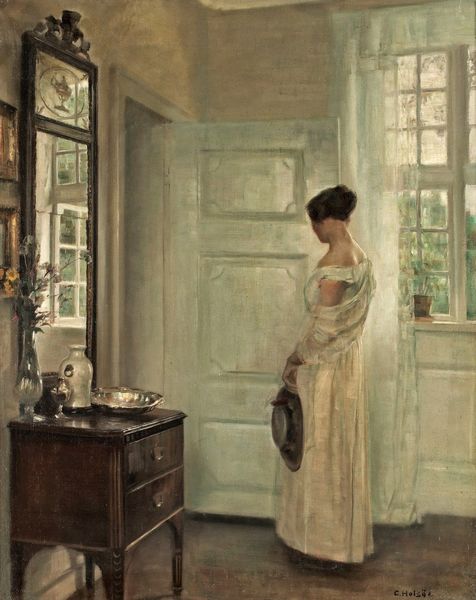
Copyright: Public Domain: Artvee
Editor: Here we have Childe Hassam's "The New York Window," painted in 1912 using oil paint. There's a quiet stillness to the scene, despite the implied cityscape visible through the window. What visual elements strike you most profoundly? Curator: It is interesting to note how Hassam manipulates the interplay of interior and exterior spaces. Consider the structural role of the window itself; it functions less as a transparent opening and more as a compositional grid. Editor: I see what you mean, the window bars almost feel like lines in an abstract painting. But what is the effect of superimposing a domestic scene on the gritty modern urbanity, stylistically? Curator: Exactly. It fractures the composition and our reading of it, drawing attention to the flatness of the picture plane. We see that the architectural geometry creates visual tension by being layered over, and interrupting the atmospheric quality. Hassam has thus explored a unique space through these devices. Are you noticing this dissonance between form and representation? Editor: Absolutely, the soft, almost dreamy application of paint in the dress clashes deliberately with the structured architecture of the city beyond. And that vibrant curtain adds another striking visual interruption. Curator: Precisely. The formal analysis shows Hassam's skill with composition through subtle manipulations. The structural elements emphasize the artifice. What initially seems like an intimate glimpse into private life reveals itself as a carefully constructed exercise in modernist picture-making. The formal contrasts suggest modernity and intimate tradition colliding. Editor: It's incredible how much a focus on the elements themselves opens up new possibilities for the viewer to engage! Curator: Indeed, formalism enables a powerful engagement.
Comments
No comments
Be the first to comment and join the conversation on the ultimate creative platform.

